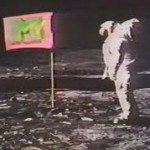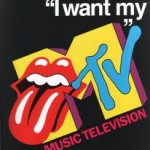Posts Tagged ‘HBO’
Boston
Sebastian Junger, author of “The Perfect Storm” and “Restrepo”, has created a documentary in tribute to the photography, Tim Hetherington who filmed the video for the documentary version of “Restrepo”. Hetherington was killed in 2011 while accompanying a band of rebels in Libya. Junger’s documentary, “Which Way Is The Front Line From Here” is currently showing on HBO.
While being interviewed about the documentary by Terry Gross on her NPR show, “Fresh Air”, Junger spoke about how he had been at home in Massachusetts when the bombs went off at the Patriot’s Day marathon. He described how he was having a conversation about the attack with a friend when, all of a sudden, he zoned out and his mind transported him back to a vivid recollection of battle scene which he’d witnessed in Afghanistan. The tastes, the sounds, the smells, the emotions of that battle washed over him as though he were actually back at that place at that point in time. The experience lasted for only a few moments and then Junger snapped back into reality.
As I listened to Sebastian Junger describe his experience, I wondered how many other Iraq and Afghanistan war veterans were in Boston that day or in Watertown during the Friday morning shootout, if they experienced similar reactions and, if they did, what the impact of those reactions might be on their lives and the lives of those with whom they live.
MTV’s 30th Anniversary

August 1st, 1981 was a day which ushered in a transformation not only for a music industry suffering from the “Disco Sucks” backlash but also for television.
MTV: Music Television was the first TV channel created specifically for a lifestyle.
The radio industry had been forced into creating niche boutique formats targeted at specific psychographic audiences by the growth of FM as a viable broadcast distribution channel. The number of listener choices on the radio dial were significantly increased.
Meanwhile, the television landscape of 1981 resembled that of radio in the 1950s and 60s. CBS, ABC and NBC dominated and under their big tents were a variety of program types appealing to a broad spectrum of lifestyles and age groups ranging from the cradle to the grave.
Cable TV distribution was still in its infancy. HBO became the first viable cable channel as a destination for uncensored movies. However, there wasn’t much else driving significant audiences to cable TV from the broadcast networks.
In the late 70s/early 80s, American Express created a marketing plan for its Gold Card which was targeted at the affluent Baby Boom generation. Part of that plan was the company’s partnership with Warner Communications to create WarnerAmex and their brainchild was a shopping network named QUBE. The concept was simple: viewers would see products showcased on QUBE and use their AMEX Gold Card to buy them.
But before they could launch QUBE, WarnerAmex needed to encourage more Americans to sign up for cable TV. In the early 1980s, the cable industry was dominated by small, local companies rather than multi-system operators (MSOs). It wasn’t unusual for the cable operation to be running out of a local mom & pop hardware store. The industry may have been able to lay cable throughout their communities, accounting for “homes passed” but not many of those homes were actual cable subscribers.
To encourage Americans to become basic cable subs, WarnerAmex created three networks: The Movie Channel to compete with HBO, Nickeldeon to attract the Sesame Street crowd, and MTV: Music Television. Expectations for these channels weren’t all that high. Essentially, they were dog & pony shows offered free to encourage increased use of cable TV and to set up the introduction of the big money machine, QUBE.
Unfortunately for WarnerAmex, the company spent too much time tweaking and researching their product. So, in 1985 , the Home Shopping Network launched and QUBE went into the history books as the cable TV industry’s version of the Edsel.
However, MTV: Music Television began to catch on at least in the markets which could get it. Viewers in places like Albany (NY) and Peoria (IL) were mesmerized by the new video music channel. Parents and their teenagers gathered around the tube and discussed the videos. It was, to quote the sagacious Sly Stone, “a family affair”.
Oddly, music industry executives in New York and LA weren’t all that interested. They’d heard about this new fledgling cable channel but they couldn’t see it. MTV wasn’t available on the cable systems serving New York City and LA. So, for its first two years of operation, MTV was pretty much off their radar screen.
The Michael Jackson phenomenon changed all that as did the introduction of MTV onto the New York and LA cable systems late in 1983 which resulted in network TV and national magazine coverage. The channel’s brand continued to grow throughout the 80s and 90s. The sales department won more arguments about the ratings value of long-form programming versus short-form music videos. “Real World”, “Beavis & Butthead”, and other long-form show continued to encroach on the channel’s schedule real estate making less time available for music videos until MTV could no longer refer to itself as “Music Television”, at least not without its tongue in its cheek, and the channel evolved into what it is today.
MTV’’s approach to targeting a specific lifestyle group was similar to what the social media world today refers to as “communities of like-minded end users”. MTV’s Bob Pittman used to say that the channel was about “fashion”. And, whether it’s fashion in the sense of clothing styles, in the sense of an individual’s overall tastes and preferences, or in the sense of a collective group’s tastes and preferences, MTV opened the door and led the way for successors like BET, E!, Bravo, Lifestyle, CMT, The Comedy Network and OWN. Meanwhile, the audience segmentation and changes in expectations created by these highly targeted networks have had their impact on the decline of broadcast network TV viewership.
As I mentioned earlier, during MTV’s first two years on air it was unavailable in Manhattan where our offices were located. So that we could monitor the channel, video airchecks were messengered in from the Long Island uplink on a daily basis. Sometime during this period, news came out that many of the classic episodes of “The Ed Sullivan Show” and Johnny Carson’s “Tonight Show” had been destroyed because the networks were reusing the old tapes on which they’d been recorded. Amazingly, no one thought it was important to preserve these shows for history.
I had a stack of MTV airchecks in my office and sensing that these might be of some historic value I contacted New York’s Museum of Broadcasting to see if they’d be interested in the tapes for their archives. The museum official with whom I spoke informed me that, no, they would not be interested in having those airchecks for their collection because MTV was (and I think I actually heard him sniff as his nose went up in the air) “cable…not TV.”
MTV was destined to transform the television and music industries but to the short-sighted it was irrelevant because the channel didn’t fit into their preconceived notions. There’s a lesson in that story.
